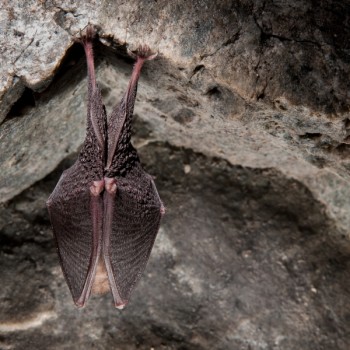
Project aims
- Protected speciesLesser horseshoe, Geoffroy's, Greater mouse-eared bats
- Geographical rangeSouthern Poland
- MethodsHabitat improvements in roosts and habitats
Main goal
The ultimate project goal is to maintain the status and create conditions for population increase of the most endangered bat species in South Poland, with special focus on the Lesser Horseshoe, Geoffroy’s and Greater Mouse-eared bats. This goal should become realized when the intermediate goals will be achieved:
- preventing destruction of the most endangered roosts
- improvements of living conditions in the key roosts
- increased safety of the bats inside the roosts, their surroundings and foraging flyways
- changed human attitudes towards bats, recognition by local communities that the bats are worth protecting, as part of the region’s heritage
- initiating of effective protection mechanisms, that can work beyond the project duration, based on the benefits for the local communities, obtained from sustaining areas and objects of key natural value.
The LIFE PODKOWIEC+ project takes care for three out of seven bat species listed by the EU Habitat Directive.
Lesser horseshoe bat (Rhinolophus hipposideros)
One of the smallest bat species, weighing only 3,5-10g. forage on flies, moths, Neuropterida, sometimes spiders and millipedes.
It reaches Northern range border in Poland, where it is threatened with extinction.
The species is strictly sedentary, rarely moves for the distances longer than 10km. All important ecosystem elements must occur in the vicinity, which makes it susceptible to extinction.
The conservation efforts helped to increase the numbers of Lesser horseshoe bats in Poland from about 120 known specimens (adult females) in 1996 up to close to 10 000 individuals in 2015.
Geoffroy’s bat (Myotis emarginatus)
It is a medium size bats, weighing 7-15g, with the wingspan of 25cm. It forages on flies, mosquitoes, moths and web spiders. Usually catches its prey in flight, but sometimes collects the food from the leaves, even the butterfly pupae.
As it is a thermophile species, in Poland its range is the same as that of the Lesser horseshoe bat. Both species often occur in the same buildings.
The numbers of the Geoffroy’s bat in Poland dropped down after 1950s, and it became rare. Presently, the population is increasing and may be estimated at several thousand in 2015.
Greater mouse-eared bat(Myotis myotis)
It is one of the largest bat species in Poland, with the body wiegh of 25-40g and its wingspan up to 44cm. It collects large insects from the ground, especially Carabids (ground beetles), also millipedes and spiders. What’s unusual, while hunting, it does not rely on echolocation, but often just listens for the sounds emitted by the prey.
In Poland it does not occur only in the Horseshoe Land, was not found in NE Poland.
The Greater mouse-eared bat groups in large breeding colonies. At the attic of a St Nicklaus church in Wleń, covered by the LIFE Podkowiec+ project activities, there is one of the largest colonies in Poland, counting up to 2000 specimens.
The project concentrates on Natura 2000 sites. There are several Natura 2000 sites in Poland created to protect endangered bat species and their habitats. Some of these sites were created only for the bats and are restricted to the roost (building or cave), in best case with very narrow surroundings.








